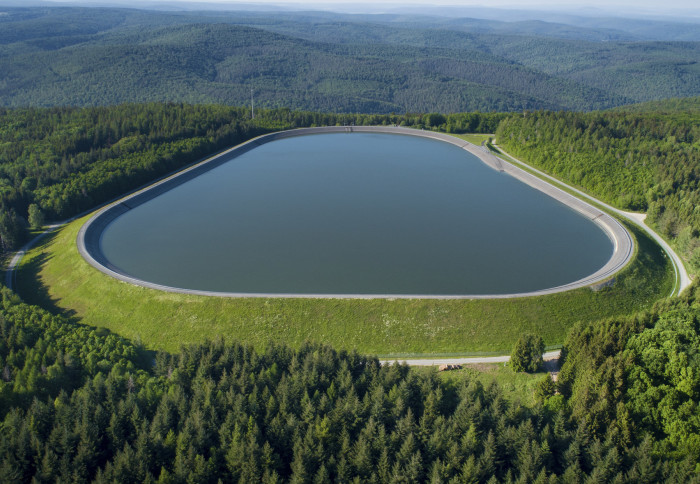Expert insights driving forward renewable power

Energy experts from Imperial have offered insights that could help the UK meet its net zero CO2 target in two new reports published earlier this year.
Separate studies by Imperial academics commissioned through Imperial Consultants by energy companies Drax and SSE Renewables have offered expert insights into the energy technologies needed to help the UK meet its target of net zero carbon dioxide emissions by 2050.
UK generated more power from renewables than fossil fuels in 2020
A study led by Dr Iain Staffell of Imperial’s Centre for Environmental Policy for Drax has revealed that in 2020 the UK generated more power through renewables than through fossil fuels for the first time. While encouraging, this was partly due to reductions in demand for energy prompted by the COVID-19 pandemic, said the researchers.
The next steps we must take towards a net zero power system will be more challenging – driving out the last sources of fossil carbon will require us to go beyond just having more wind and solar power. Dr Iain Staffell
To meet the UK target of net zero carbon emissions by 2050, new but proven technologies will need to be introduced, the report states.
Dr Iain Staffell, and lead author of the quarterly Electric Insights report, said: “2020 saw Britain edge closer to the power system of the future with renewables generating more power than fossil fuels. Flexible technologies like pumped hydro storage kept the system stable as supply from renewables increased and demand for power fell.
“The next steps we must take towards a net zero power system will be more challenging – driving out the last sources of fossil carbon will require us to go beyond just having more wind and solar power. New business models, backed by policy and investment, will be needed to bring advanced-but-proven technologies into the mainstream.”
Biomass identified as key technology
Biomass is unique amongst renewable technologies due to its versatility, from being used in power generation to hydrogen production – and even new forms of plastics. Will Gardiner Drax Group CEO
One technology discussed in the report is bioenergy with carbon capture and storage (BECCS), in which biomass is grown to naturally remove carbon dioxide from the atmosphere and then burnt to generate power, with the carbon dioxide produced at this stage captured and stored.
Will Gardiner, Drax Group CEO, said: ““Biomass is unique amongst renewable technologies due to its versatility, from being used in power generation to hydrogen production – and even new forms of plastics. Add to this its ability to deliver negative emissions with BECCS – biomass is one of our most valuable tools for reaching net zero emissions – a technology Drax is ready to invest in.”
Newly revealed – water batteries could support transition to net zero energy at lower cost
In a report for renewable energy generator and developer SSE Renewables, Professor Goran Strbac in Imperial’s Department of Electrical and Electronic Engineering and colleagues have shown that long-duration pumped hydro storage could reduce the gross cost of delivering a net zero energy system by up to £690 million.
Wind and solar power will play a central role in the UK’s transition to a net zero energy system, however the power they supply varies depending on the weather and they therefore need to be complemented by other technologies to provide a reliable energy supply.
One approach is to supplement some renewable power with other forms of low-carbon energy generation such as nuclear, hydrogen and fossil fuels with CCS. This may be accompanied by new power lines to better transmit energy from windy to non-windy parts of the country, in particular by increasing the currently limited energy transmission capacity between England and Scotland.
“The findings in this report support our view – that pumped hydro storage projects like Coire Glas have a huge role to play in the UK achieving its ambition of net zero carbon emissions by 2050 in the most cost-effective way possible.” Mike Seaton Director of Development, SSE Renewables
Long-duration pumped hydro systems store power generated by renewables by electrically pumping water to an elevated height and releasing it to generate electricity when needed. They can store energy for a duration of days – making up for sustained shortfalls in wind or sun better than battery technologies that only store energy for hours.
The economic benefit of long-duration pumped hydro storage, which the authors of the report have modelled for the first time, arises primarily because it may be more cost-effective to store energy generated by renewables for a long duration using the technology than to build extra capacity into the energy system from non-renewable low-carbon sources. Long duration pumped hydro also reduces the need to build new power lines. Professor Strbac says that this study provided, for the first time, core evidence related to the potential role and value of long duration pumped hydro storage in supporting cost-effective energy system decarbonisation.
SSE Renewables is implementing a hydro storage scheme at Coire Glas in Scotland. Mike Seaton, Director of Development at SSE Renewables said: “The findings in this report support our view – that pumped hydro storage projects like Coire Glas have a huge role to play in the UK achieving its ambition of net zero carbon emissions by 2050 in the most cost-effective way possible.”
Article text (excluding photos or graphics) © Imperial College London.
Photos and graphics subject to third party copyright used with permission or © Imperial College London.
Reporter
David Silverman
Communications Division